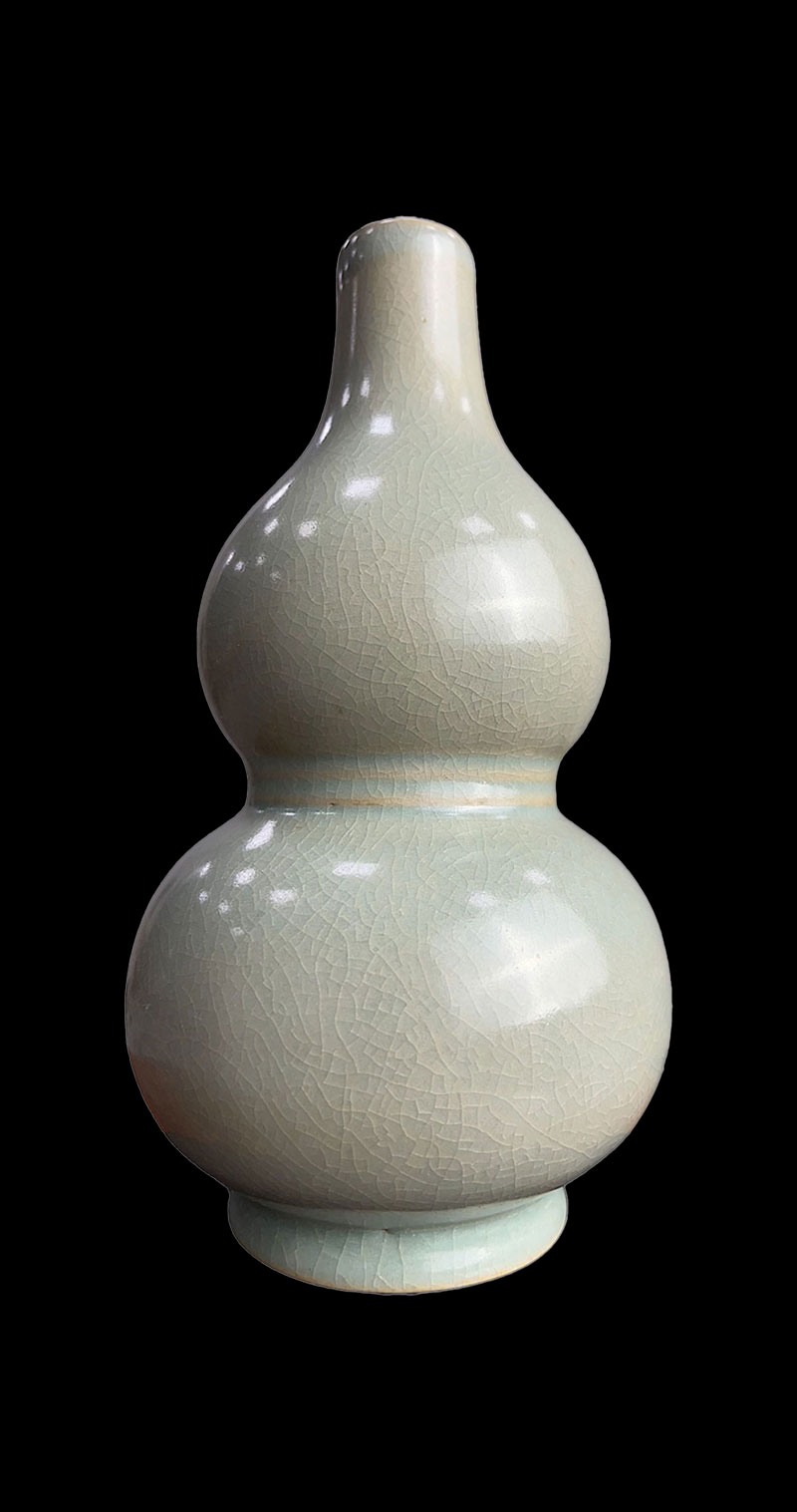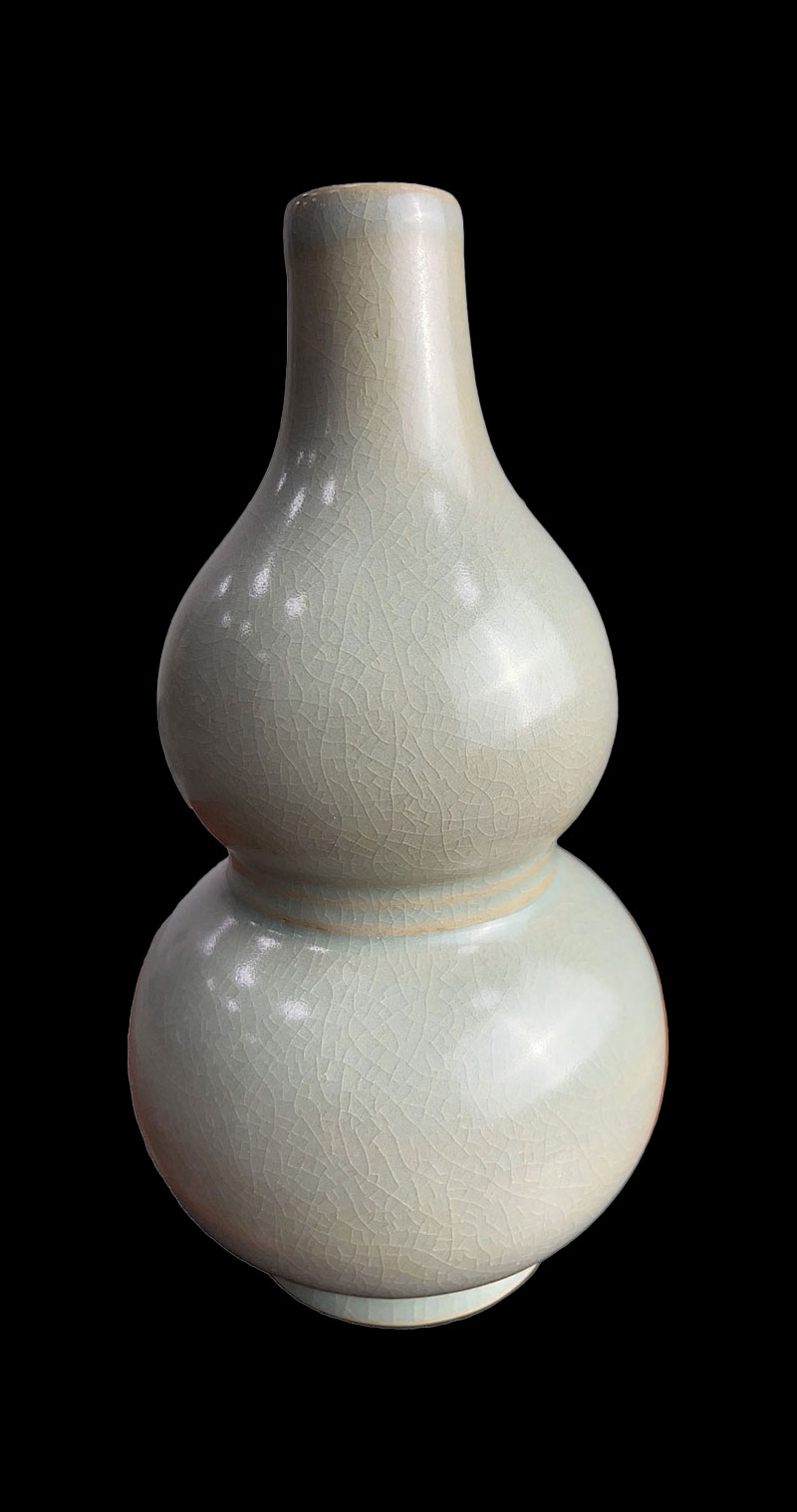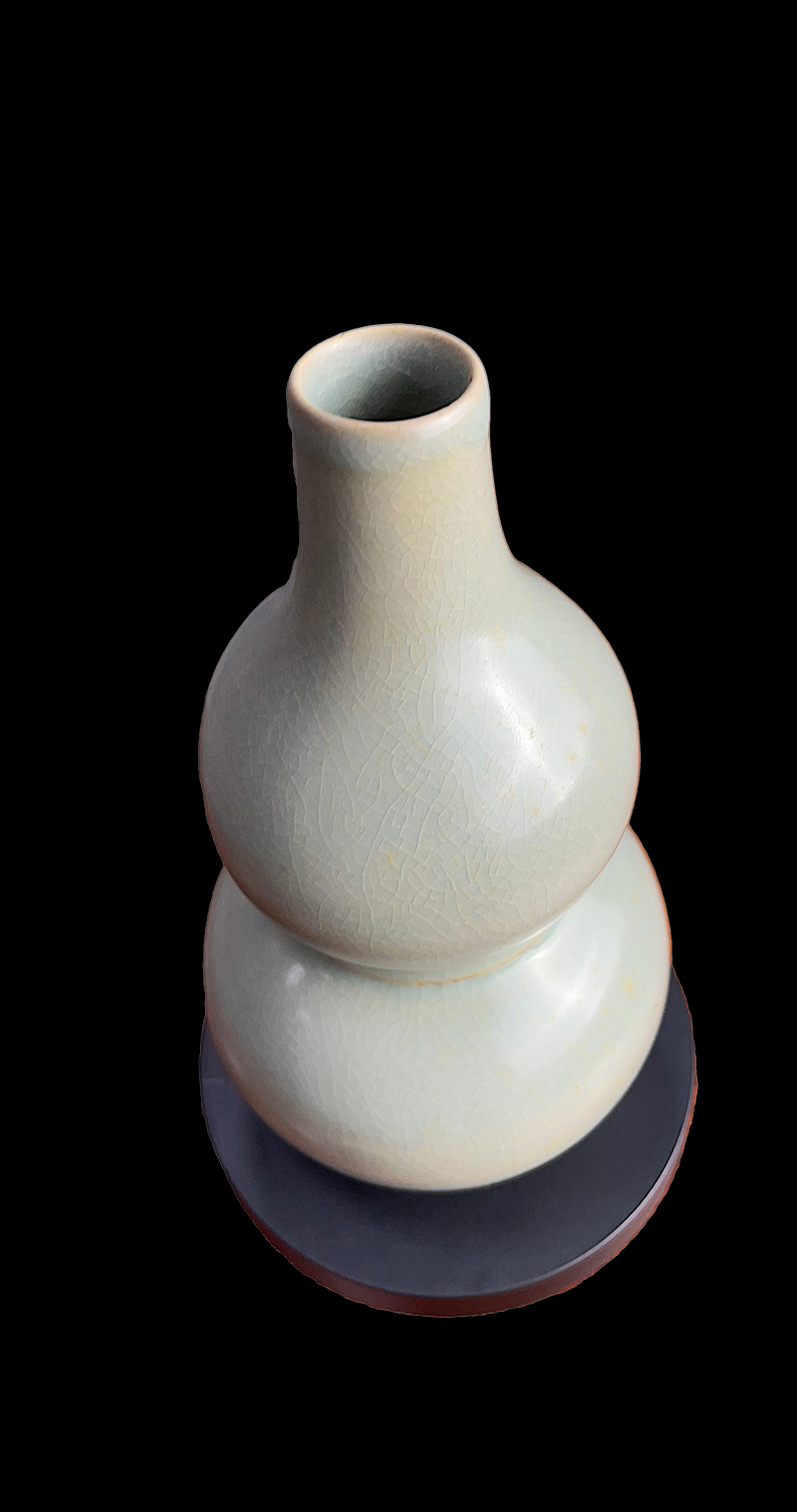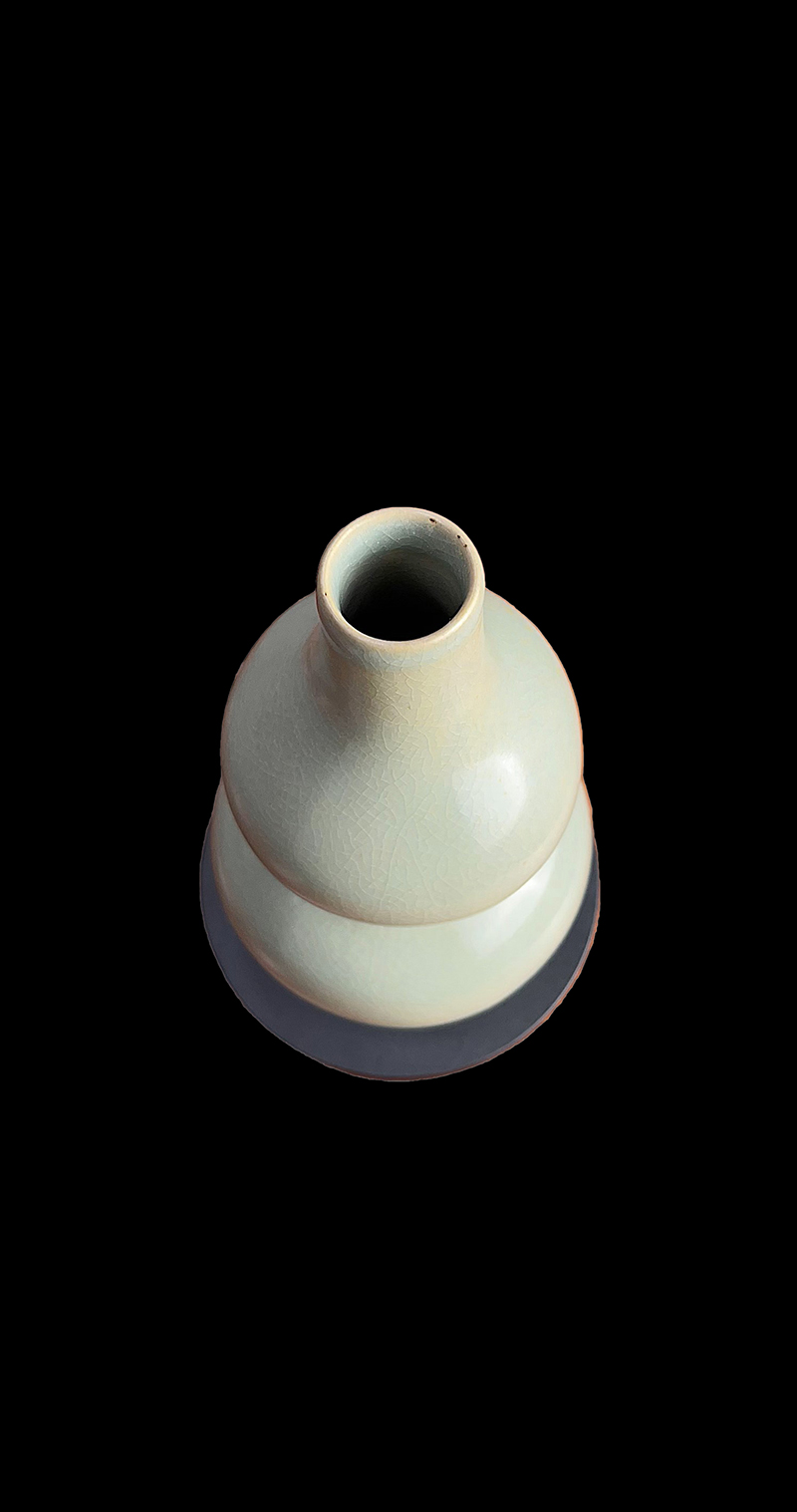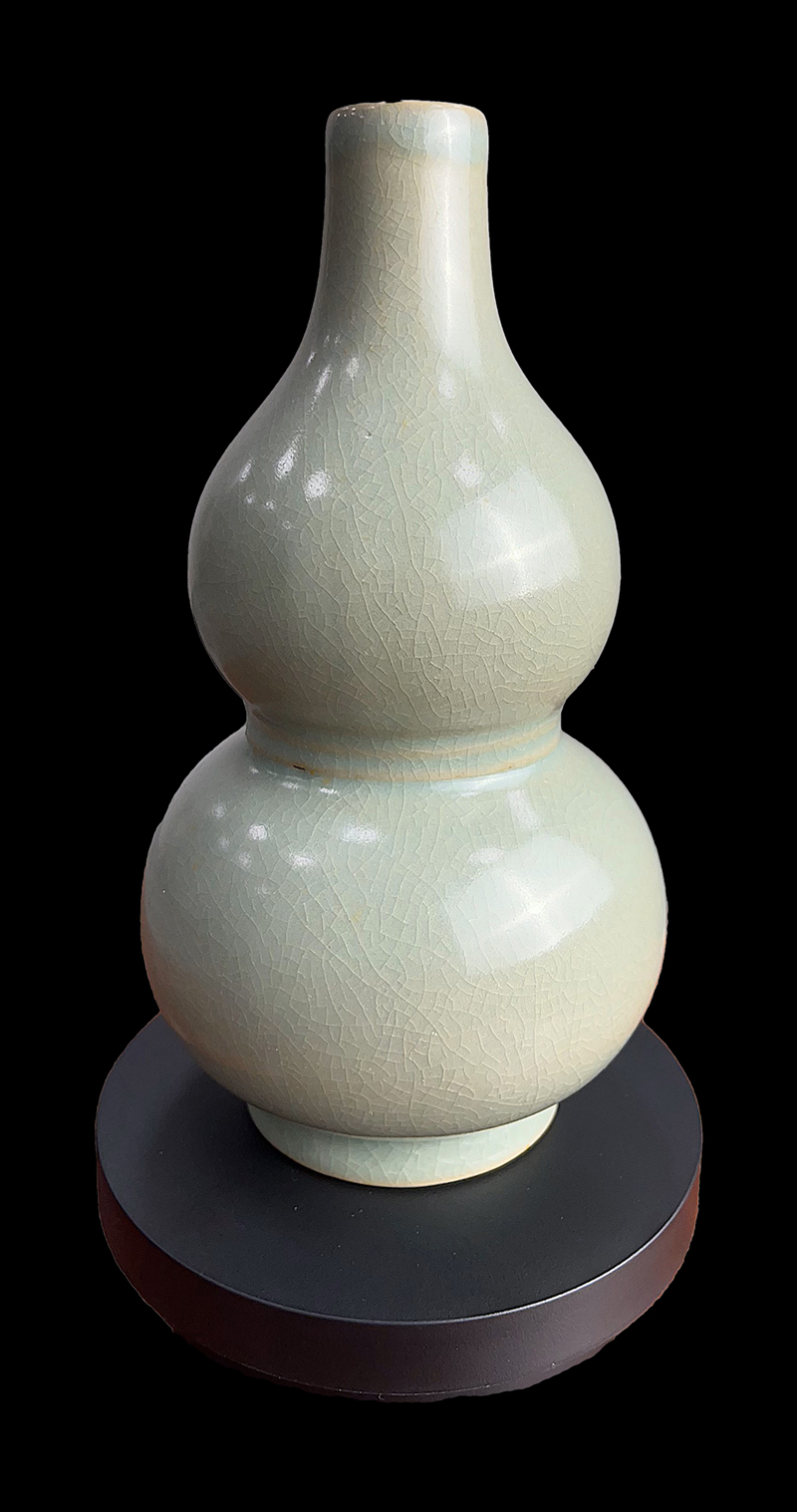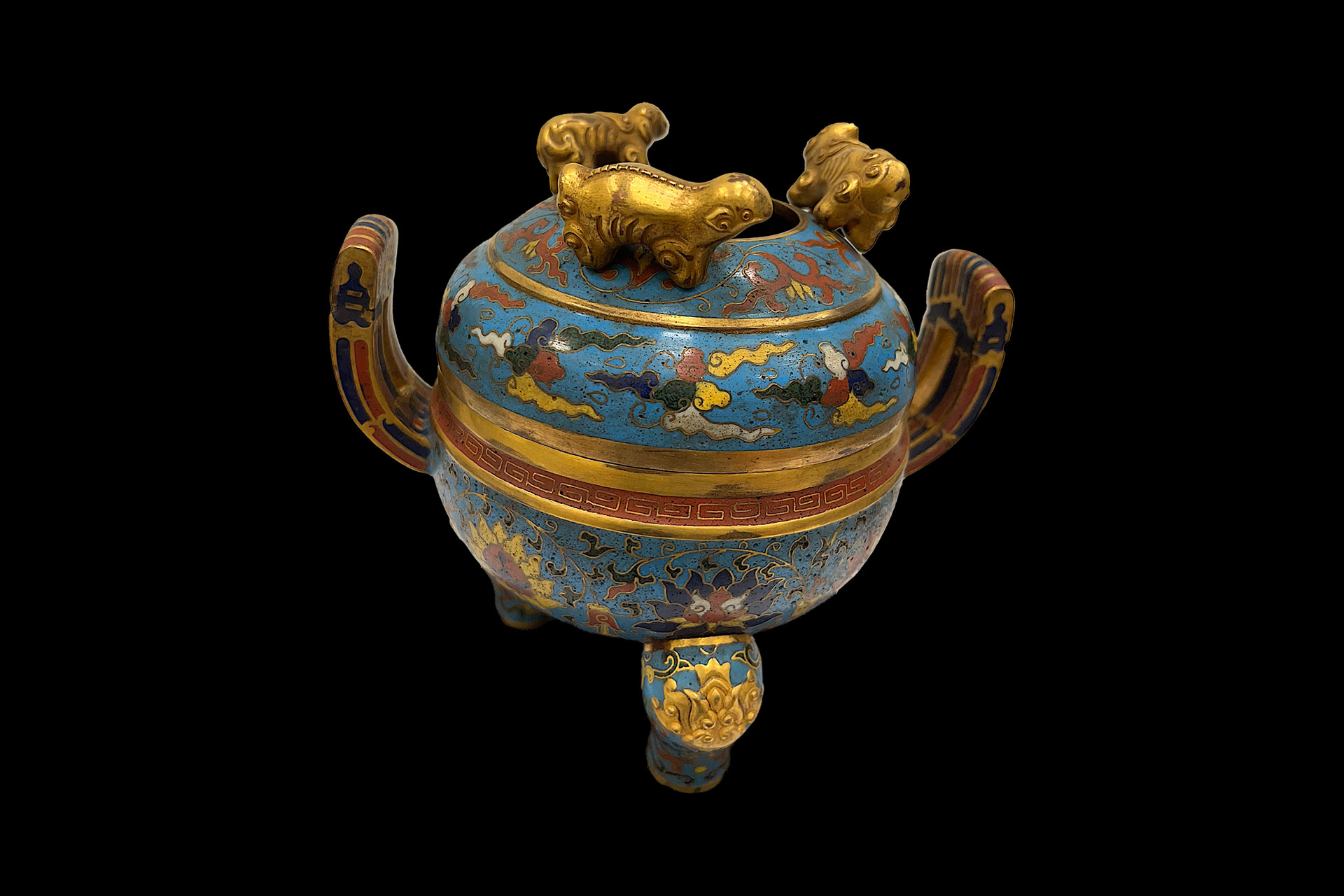
北宋汝窯葫蘆瓶
Ru Kiln Gourd Bottle
Ru Kiln Gourd Bottle
Ru kiln Gourd Bottle
简介
Introduction
汝窯汝瓷被譽為宋代五大名窯之首的魁寶,據說:北宋第八位皇帝宋徽宗趙佶,夢見一場大雨後天空雲破處有一抹神密的天青色,他醒來後寫下(雨過天青雲破處,這般顏色做將來),並把詩句交給工匠燒製出這種顏色,與此汝瓷就此誕生,周杰倫那句:(天青色等煙雨)說的就是汝瓷,汝窯汝瓷作品在宋代宮廷中被視為珍品,歷經千年仍然是中國藝術中最珍貴的收藏之一。
Ru kiln porcelain, renowned as the premier treasure among the five great kilns of the Song Dynasty, holds a legendary origin. It is said that the eighth emperor of the Northern Song Dynasty, Emperor Huizong Zhao Ji, once dreamt of a mysterious sky blue hue emerging after a heavy rain. Upon waking, he penned the verse, "After the rain, the sky clears, and this color shall be created" (雨過天晴雲破處,這般顏色做將來), which describes the clarity and freshness of the sky after rain, and tasked artisans with producing this shade. Thus, Ru porcelain was born. Jay Chou's phrase "sky blue rain" (天青色等烟雨) refers to this very porcelain. In the Song Dynasty, Ru kiln works were esteemed as precious treasures within the royal court and remain among the most valuable artifacts in Chinese art today.
北宋時期
Northern Song Period
公元960年至1127年是中國歷史上文化和藝術成就的黃金時代,文學和藝術有卓越的成就,如著名畫家“王希孟”,的鴻篇傑作(韆裏江山圖)增經被清朝乾隆皇帝收藏過,現在故宮博物院,在文學方面還有詩人:蘇遼,最著名的(水調歌頭)明月幾時有,把酒問青天。蘇遼的老師歐陽修的(醉翁亭記),等詩人的作品至今仍然是為中國文學的經典之作,在技術方面:偉大的畢生發明家發明活字印刷術,北宋時期的山水畫發展迅速,範寬和郭熙等大師創作的作品展現了自然的壯麗和雄偉。
From 960 to 1127 AD, this era was a golden age of cultural and artistic achievements in Chinese history. The period saw extraordinary accomplishments in literature and art, such as the grand masterpiece "A Thousand Li of Rivers and Mountains" (千里江山图) by the renowned painter Wang Ximeng, which was once collected by Qing Emperor Qianlong and is now housed in the Palace Museum. In literature, poets like Su Shi, famous for "Prelude to Water Melody" (水調歌頭), with the line "When will the moon be bright and clear?" (明月幾時有), and his teacher Ouyang Xiu, known for "The Pavilion of the Drunken Old Man" (醉翁亭记), produced works that are still considered classics of Chinese literature. Technologically, the great inventor Bi Sheng developed movable type printing, and landscape painting flourished, with masters like Fan Kuan and Guo Xi depicting the majesty of nature in their works.
稀有性
Rarity
汝窯汝瓷作品極為稀有,宋代五大名窯俗語有雲:縱有家財萬貫,不抵汝瓷一件,現在傳世的汝窯瓷大多數存在博物館,汝窯開窯造瓷的時間短暫,大約只是在北宋哲宗元佑元年到徽宗崇寧五年(1086-1106)的二十年之間而已,故傳世極為稀少。關於汝窯的傳世數量有兩種說法,一是根據《中國陶瓷史》的說法,認為傳世不足百件。另一種說法是上海博物館出版的《汝窯的新發現》中列舉了傳世汝窯瓷器六十五件,且註明了出處。其中,台北故宮博物院是汝窯最集中的地方,共21件,其中有 11件在清朝乾隆皇帝收藏過並在器物上提诗刻字,北京故宮17件。由此可见汝窑之珍贵。
Ru kiln porcelain pieces are exceptionally rare. A common saying about the five great kilns of the Song Dynasty goes, "Even with a fortune, a single piece of Ru porcelain is priceless" (縱有家財萬貫,不抵汝瓷一件), indicating that no amount of wealth can compare to the value of a single piece of Ru porcelain. Most surviving Ru kiln porcelains are housed in museums due to the kiln’s short production period, from the first year of Yuan You under Emperor Zhezong to the fifth year of Chong Ning under Emperor Huizong (1086-1106), making these artifacts exceedingly scarce. There are two main theories regarding their number: one from "The History of Chinese Ceramics" (中國陶瓷史), stating fewer than a hundred pieces exist, and another from "New Discoveries of Ru Kiln" (汝窑的新发现) by the Shanghai Museum, listing 65 pieces. Among these, the Taipei National Palace Museum holds the largest collection with 21 pieces, including 11 items once collected by Emperor Qianlong, while the Beijing Palace Museum has 17 pieces.
價值和狀態
Value and Condition
瓷器市場價值急劇上升,在主要的拍賣行的銷售額顯著,尤其是官窯精品瓷一直是追捧焦點,並不斷刷新瓷器成交紀錄,例如在2017年10 月份香港蘇富比拍賣會上就拍出2.6億港幣成交價加佣金為2.94億港幣的一個汝窯洗,主要是這类瓷器不僅具有造型藝術和歷史文物價值。這件獨特的瓶形藝術品引起了收藏家極大關注,瓶子完好完美,具獨汝窯蟹爪紋,是指每一個器表面都有不規則的開片,每一開片蟹爪紋都是獨具特色,獨一無二的,還有另一種獨特的希梳汽泡,人工是無法做出來的,這件藝術品的保存工作非常細緻,確保其在未來幾代人中仍能保持完美狀態。
The market value of porcelain has skyrocketed, with significant sales at major auction houses. Official kiln porcelains, in particular, are highly sought after and continuously set new auction records. For example, in October 2017, a Ru kiln dish sold for HK$260 million (approximately HK$294 million with commission) at Sotheby’s Hong Kong. This surge is due to the porcelain's artistic form and historical value.This unique bottle-shaped artwork has garnered immense attention from collectors. It is in perfect condition, featuring the distinctive "crab claw" crackle pattern (蟹爪紋) unique to Ru kiln pieces, with each irregular crackle being unique. Another distinctive feature is the "fishtail" bubbles (魚鱗紋) that cannot be replicated by modern methods. The preservation of this artwork has been meticulous, ensuring it remains in pristine condition for future generations.


